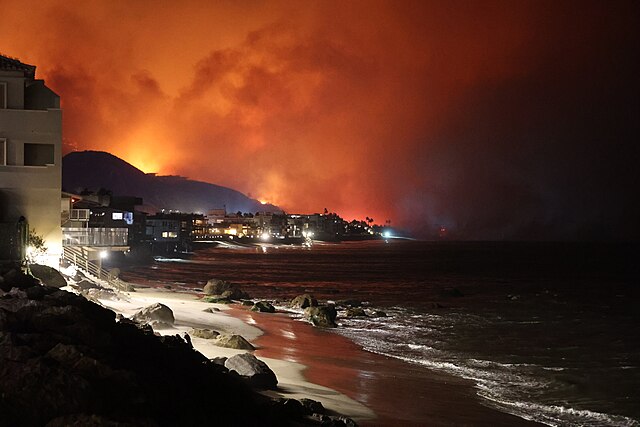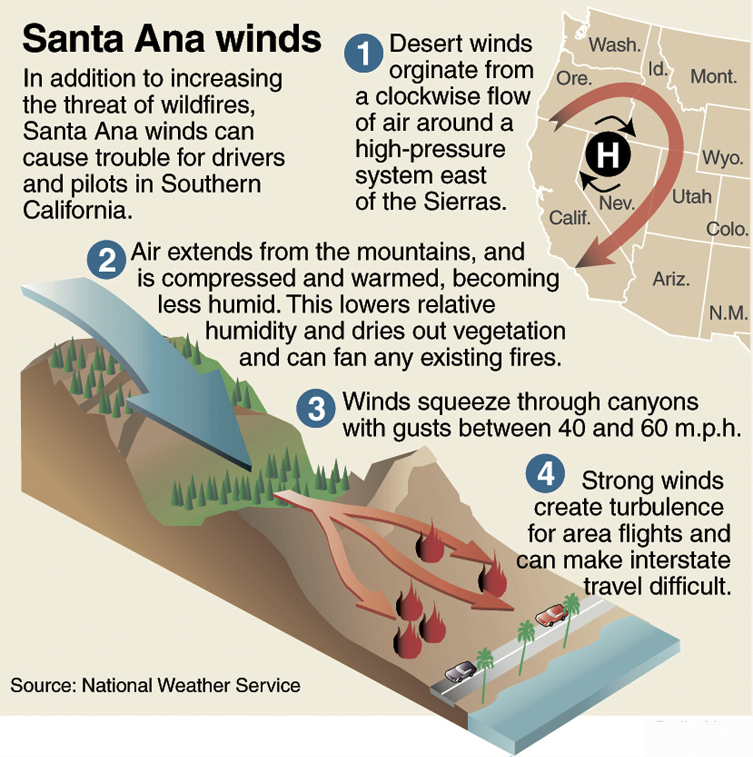 California is no stranger to wildfires with peak season beginning in late spring and usually ending by October.
California is no stranger to wildfires with peak season beginning in late spring and usually ending by October.
However, this year has been unusual with Los Angeles and surrounding areas battling three major fires in January.
The Palisades, Eaton, and Hurst fires have been burning for six days, destroying entire neighborhoods and killing at least 24 people. Firefighters are working hard to control the fires, especially with strong winds expected to return, which could worsen the fires.
Over 100,000 people have had to evacuate, and about 12,000 buildings have been damaged or destroyed. The damage could cost between $135 billion and $150 billion, making it one of the most expensive natural disasters in U.S. history.
What Is Fueling The Fires?
Scientists use the term "hydroclimate whiplash" to describe a situation where wet years lead to increased vegetation followed by a dry year where now there is plenty of fuel to burn. While 2022 and 2023 were wet winters in Southern California, the Los Angeles area received less than 10% of its average rainfall in 2024.
 Another factor is the Santa Ana winds that fan the flames (read more here). These winds originate in the inland Great Basin area (most of Nevada, half of Utah, and other western states) where it is cooler/colder.
Another factor is the Santa Ana winds that fan the flames (read more here). These winds originate in the inland Great Basin area (most of Nevada, half of Utah, and other western states) where it is cooler/colder.
As these winds flow down the slopes of the Sierra Nevada and other California mountain ranges, they gather speed and strength -- and also become hotter. This is because air compresses as it rushes downhill and its temperature increases by 30 degrees Fahrenheit for every mile that it descends.
The final ingredient for wildfires is a source of heat that sparks the fires. While this can be a natural source like lightning, it is more often due to reckless human activity or downed power lines. The source of the LA fires is under investigation and yet to be determined.
Challenges and Impacts
The Los Angeles fires have stressed the city's water supply system with insufficient water pressure from fire hydrants or the hydrants running dry. Water systems in cities are typically designed for small fires and cannot handle large fires that burn for days. Firefighters have been using planes to drop water and special chemicals to stop the fire from spreading.
The tens of thousands of people who were forced to evacuate are scrambling to find shelter in a city that already faces housing shortages. Fires also cause other long-term impacts as discussed in the article here.
Authorities are keeping a close watch and may ask more people to evacuate if the danger increases. Meanwhile, California's Governor Gavin Newsom has requested $2.5 billion to aid in response and rebuilding efforts.
The video below captures before and after pictures of the areas affected by the wildfires.
Sources: LA Times, CNN, BBC, NYTimes











